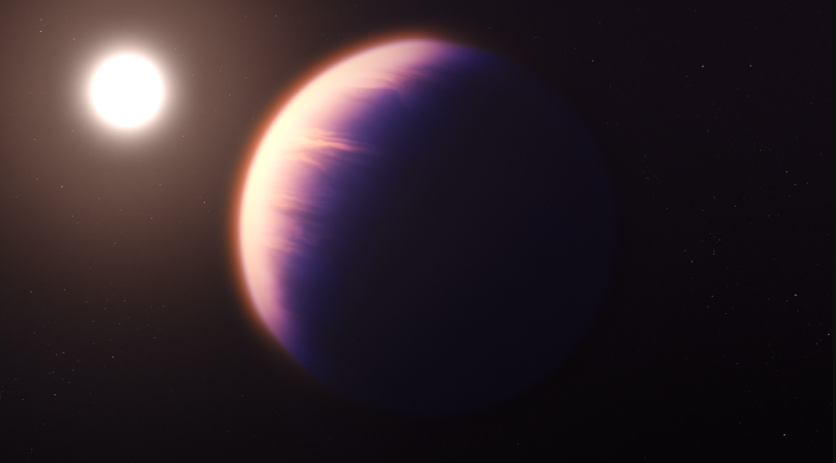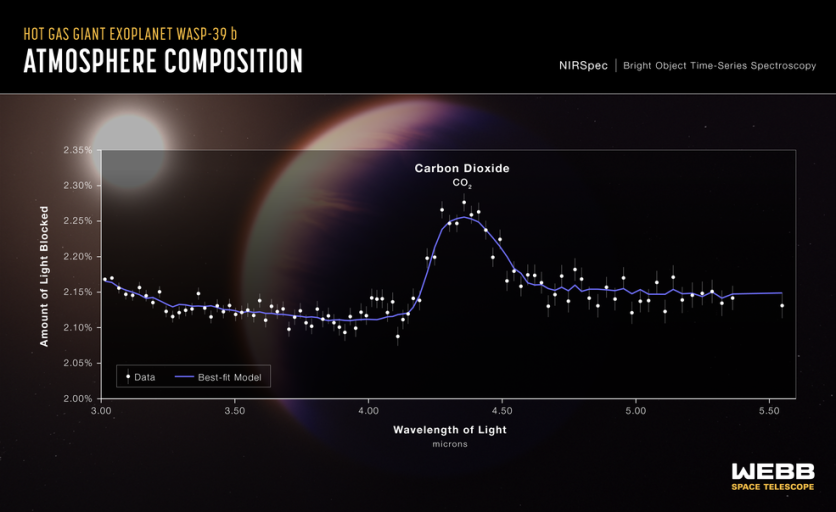The first definitive proof of carbon dioxide in an exoplanet's atmosphere has been discovered by NASA's James Webb Space Telescope.
This observation of a gas giant planet, which is 700 light-years from Earth and orbiting a Sun-like star, sheds light on the planet's makeup and development.
The discovery, which has been approved for publication in Nature, provides proof that Webb might one day be able to identify and analyze carbon dioxide in the thinner atmospheres of smaller rocky planets, according to NASA.

Hot Gas Giant
WASP-39 b is a hot gas giant with a diameter 1.3 times larger than Jupiter and a mass around one-quarter that of Jupiter.
This gas giant orbits its star very closely, approximately one-eighth the distance between the Sun and Mercury. It completes one round in just over four Earth days, in contrast to the colder, more compact gas giants in our solar system.
The planet was found in 2011 based on ground-based observations of the subtle, recurring dimming of its host star's light when the planet transits or crosses in front of the star.
Water vapor, sodium, and potassium were previously discovered in the planet's atmosphere through observations made by other telescopes, including NASA's Hubble and Spitzer satellite telescopes.
But thanks to Webb's unrivaled infrared sensitivity, the presence of carbon dioxide on this planet has now been verified.
Crystal-Clear, In-Depth Indication of CO2
For its observations of WASP-39b, the study team employed Webb's Near-Infrared Spectrograph (NIRSpec). The exoplanet's atmosphere's spectrum, as a result, shows a little hill between 4.1 and 4.6 microns that contains the first crystal-clear, in-depth indication of carbon dioxide ever found in a planet beyond the solar system.

NASA claimed that no observatory has previously recorded such minute variations in the brightness of so many different colors in an exoplanet transmission spectrum between the wavelengths of 3 and 5.5 microns.
Accessibility to this part of the spectrum is important in determining the abundance of gases such as methane, water, and carbon dioxide, which are believed to exist in a variety of exoplanets.
"Detecting such a clear signal of carbon dioxide on WASP-39 b bodes well for the detection of atmospheres on smaller, terrestrial-sized planets," Natalie Batalha of the University of California at Santa Cruz, leader of the Webb team, said.
NASA further noted that it is crucial to understand a planet's atmosphere because it contains information about the planet's formation and evolution.
Related Article : NASA's James Webb Space Telescope Is Set To Capture Dazzling Clouds of Vaporized Gems On Distant Exoplanets
This article is owned by Tech Times
Written by Joaquin Victor Tacla




